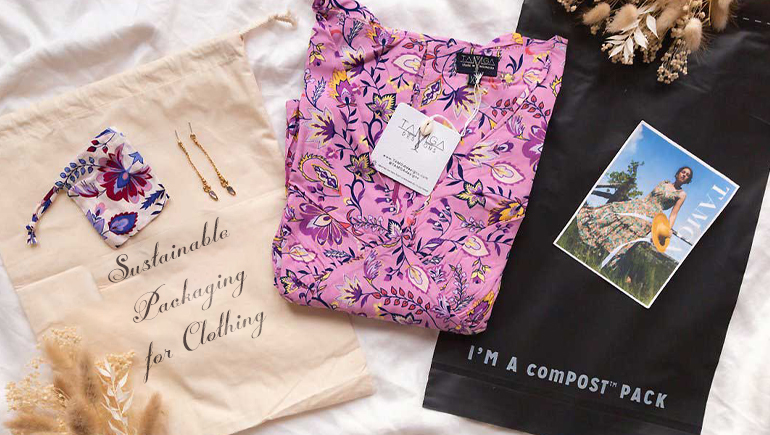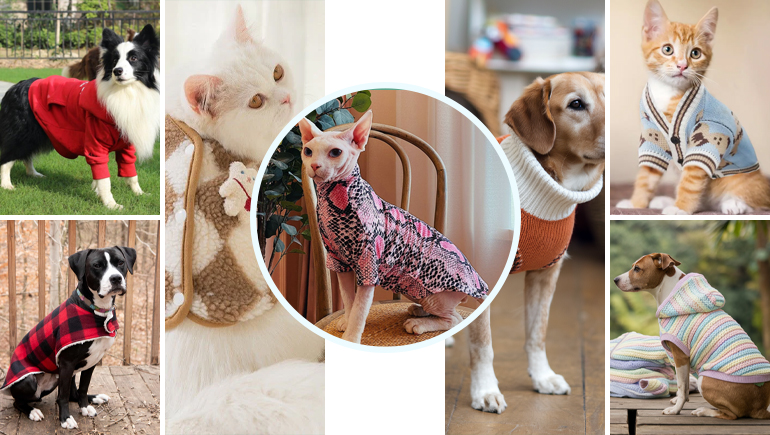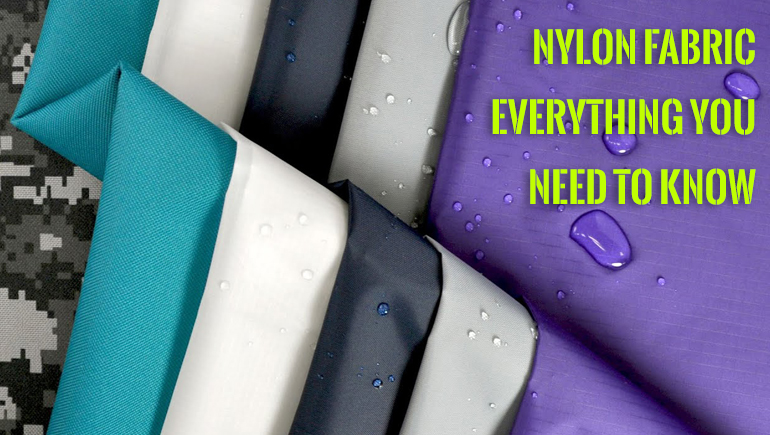
When World War II began, cotton and wool dominated U.S. textiles, but by 1945, nylon and other synthetics took over the market, prompting postwar manufacturers to seek new ways to promote them. Nylon is the fabric that is used majorly in the textile industry for tights, stockings, sportswear, yoga pants, and other form-fitting types of apparel. It has various properties, including durability, lightweight, and the ability to adapt.
This fabric serves fashion, outdoor gear, and industrial uses. There are numerous types of nylon fabric, but choosing the best one is up to you. You can select the material as per your preferences, product type, and to meet specific needs.
In this blog, you will get to know everything essential about this man-made material. Whether you’re selecting nylon fabric for a stylish jacket or industrial equipment, let's dive into the key aspects to consider, such as disadvantages, printing, care, and maintenance of the nylon.
Apparel companies find alternatives to silk and hemp for parachutes in World War II. Polymer fabric is the second name for nylon. It has synthetic polymers that are used to make a variety of different types of apparel. When it comes to the synthetic material, it means there is no usage of organic material, unlike other organic or semi-synthetic fibers. As this material is a man-made material so how can it be 100% organic? Makers use artificial materials and chemical compounds like Hexamethylenediamine (HMDA), Adipic acid, and Caprolactam to create nylon.
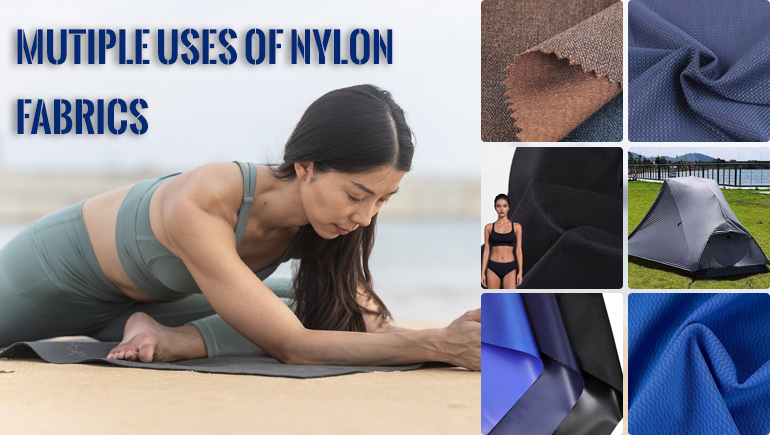
Nylon is not only used for making clothes, but also serves other purposes. Let's have a look at where it sprinkles its magic:
For outerwear, leggings, and sportswear, nylon ranks first due to its lightweight and moisture-wicking properties. Swimmers and athletes prefer wearing the elastane nylon fabric because it dries quickly. It gives comfort, strong stretch, absorbs moisture, and saves their time.
People use nylon for making hiking backpacks and waterproof tents. The fabric withstands rough terrain, heavy loads, and water. Its water-repellent properties make the campers dry in the rain, snowfall, and fog. The reason behind it is its tear resistance, water repellence, and lightweight nature. It is indispensable for outdoor adventures because it dries quickly, resists mildew, and maintains flexibility.
Have you seen seat belts and airbags in the car? These automotive applications are made up of nylon cloth due to its stain resistance, durability, and ability to withstand stress. Moreover, it is a key material for surgical sutures in the medical field due to its thin yet strong threads. It also provides maximum strength and resistance to abrasion for conveyor belts, ropes, and cords.
Nylon is a top choice for upholstered furniture and interior fabrics because of its exceptional durability and resilience. This fabric helps people to maintain the shape of couches, chairs, and even with heavy use due to its resistance to stretching, wrinkling, and abrasion. Its strength, easy care, and long-lasting appearance are its main properties, which make nylon ideal for high-traffic household areas.
Nylon fabric was first introduced for women’s stockings the tights, pantyhose, and socks due to its elasticity. It offers a smooth, sheer, and form-fitting appearance. For intimate apparel, this fabric maintains shape retention in bras, lingerie, and underwear.
Nylon is an excellent choice for making luggage and bags due to its water-resistant features. You can get nylon bags in many styles, like backpacks, duffel bags, suitcases, and tote bags. Nylon fabric for bags is generally stronger and more durable than polyester.
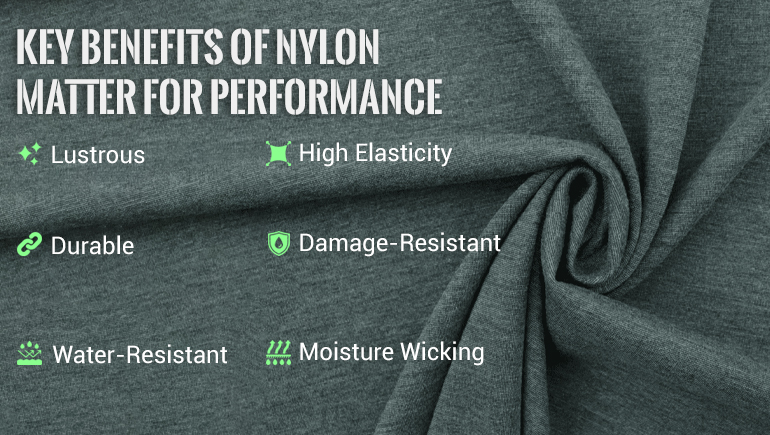
There will be no lie if we say that nylon has many benefits. Let's dig into the exceptional advantages that we do not know about this fabric:
Nylon has a sheen in its appearance because it reflects light well, giving it a shiny and silky look. You can find it to be lustrous in different levels, like semi-lustrous to dull. The shiny synthetic polymer makes it distinctive from other fabrics due to the surface reflecting light more evenly than many natural fibers.
When woven tightly or blended with other fibers, nylon’s smooth texture enhances its luster. Nylon 12 with SLS or MJF technology feels a bit sugary, especially its 3D printed parts. We can use a process called vapor smoothing to make the surface smoother.
When nylon gets very hot, the chances increase for turning it into a thick liquid. This fabric consists of molecules that are called tangled springs or coils. which makes it easy to bend or stretch.
Once the nylon cools, it has two parts in its structure. Hard and soft areas, like crystals and amorphous materials, provide nylon with the ability to stretch and then step back in its original shape without leaving its structure or threads.
Additionally, nylon and Lycra fabric is a great combination to increase the flexibility for up to five or eight times.
Nylon is durable on its own because of its stronger molecular bonds, but you can make it stronger. By adding 10–40% glass fibers and up to 70%, you can add more strength for stretching. Moreover, it is stiffer and breaks with minimal bending.
As we have mentioned above that nylon has high strength, and it is also resilient to oil and chemicals. Coal, water, and oxygen are the compounds from which nylon is made. Hexamethylenediamine (HD) and adipic acid are two chemicals that link together repeatedly to create strong polymer chains. It provides toughness, resistance to oils, and many chemicals.
Nylon can absorb some moisture from the air, but not as much as natural fibers like wool or cotton. When it takes in water, nylon can slightly change size and become less stiff, since water makes the material more flexible. Even so, nylon still works well because water doesn’t soak all the way through thick parts.
For example, in 3D-printed nylon, when it’s dipped in dye, the color only goes into the outer surface (about 0.25 mm deep). Furthermore, many nylon fabrics have coatings or finishes to repel water, making them ideal for rain gear or outdoor goods.
After exploring the water-resistant benefits of nylon, it is famed for its fastest dryness capability. It has medium moisture-wicking qualities, making it apparel firms' favorite in the fabric industry. It pulls sweat to the surface of the fabric, where it dries quickly. This fast-drying property makes nylon very comfortable to wear during exercise or in hot weather. It helps keep you dry and comfortable, especially for activewear.
After finding out the advantages, we are heading towards the drawbacks of nylon. Let's step in:
Printing on nylon fabric is not just a piece of cake. It is hard to print the nylon because of its smoother and non-porous surface. Manufacturers find hurdles for inks and dyes to stick or stay on this fabric as compared to cotton or other natural fabrics. Additionally, heat-sensitive printing methods are ideal to avoid high temperatures that could melt or damage the fabric.
These are the following 4 common printing methods for nylon fabric:
When it comes to nylon fabric, you will see its low-maintenance properties. You can also extend their lifespan and appearance by following these are the following steps:
Pro Tip: Avoid ironing directly on nylon, as its synthetic fibers can melt at high temperatures.
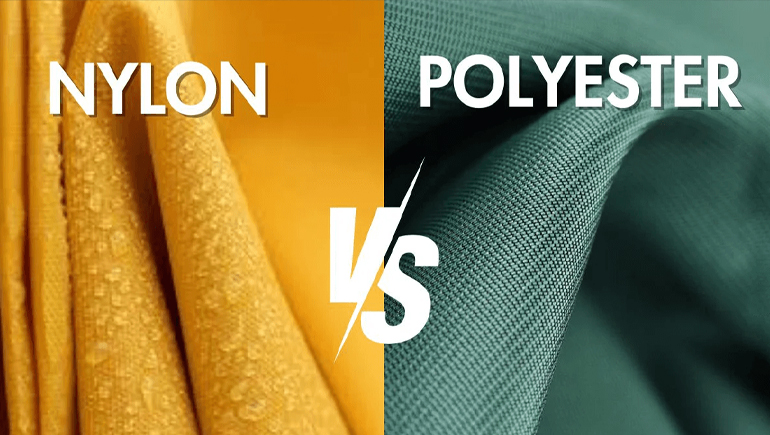
Nylon fabric is known for being stronger, more durable, and highly resistant to abrasion. It is suitable for heavy-duty applications like outdoor gear and upholstery. It gives a smoother feel and better stretch than polyester.
On the other hand, polyester fabric promises excellent moisture resistance because it absorbs less water and dries faster than nylon. It also offers better UV resistance, making it less likely to fade or weaken when exposed to sunlight. It is preferable for outdoor furnishing and clothing.
Nylon is composed of various types of plastics. There is a group of thermoplastics that excellently change into fibers, films, and molded shapes due to their versatility.
Let's break down the most common types of this material and see what makes every type unique from each other.
Let's start with nylon 1,6. If you're looking for moisture absorbency for clothing, upholstery, and industrial fabrics, then this is the perfect option for you. It is formed through a reaction called acid catalysis.
PA 6 is the go-to choice for textiles, medical, and electronic products because it's stretchy, strong, and shiny. This type absorbs water quickly, which indicates water resistance. If you want to dye it any color, you can choose no.6 because it can deal with temperatures of up to 150℃.
This material is formed with hexamethylenediamine and adipic acid. For providing superior strength to wear pads, side bearings, and other mechanical products that have a high chance of being exposed to oils and chemicals. It provides double heat resistance compared to nylon 6.
PA 46 has a faster crystallization rate compared to nylon 6 and 46. It consists of higher heat resistance properties than the two types mentioned above because it is suitable for high-temperature automotive parts.
Moreover, this type fulfills the need for much higher heat resistance and faster crystallization than nylon PA 6 and 66. Nylon PA 46 is used for high-temperature automotive parts like transmissions, brakes, and cooling systems because it handles high temperatures well.
Nylon 610 or PA 610 is used for electrical insulation and precision parts. It has lower water absorption and density than nylon 66. If anyone wants better dimensional stability than Nylon 66, it is ideal for durable engineering applications.
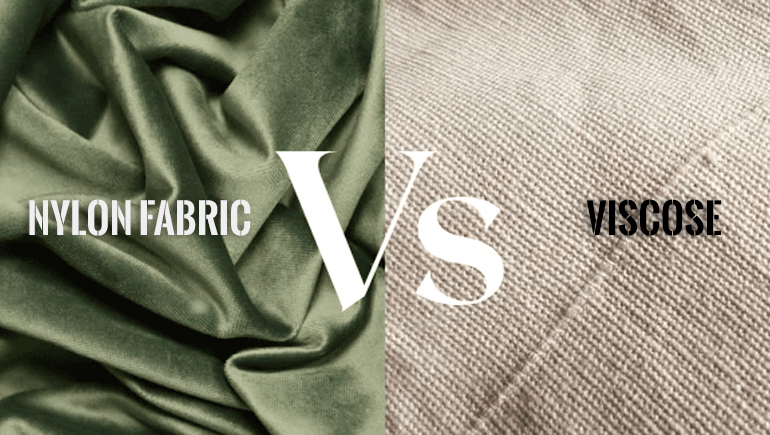
When we talk about viscose, we have found that it is a semi-synthetic fiber. It is made from regenerated cellulose (usually from wood pulp). Viscose gives comfort like silk and cotton, especially in warm weather, but is highly breathable in hot weather. It is prone to shrinking, wrinkling, and tearing because it gets weak when wet.
On the other hand, nylon proves to be a fully synthetic fiber that is derived from petrochemicals. It is less breathable and comfortable than viscose because it can feel synthetic and slightly plasticky on the skin. It is stretchable, abrasion-resistant, and dries quickly.
Polyester and nylon have different qualities, but are made with synthetic fabrics like petroleum. When it comes to comparison, polyester is less breathable and slightly stiffer, affordable, wrinkle-resistant, and dries quickly. It is ideal for clothing and home textiles.
There is a slight difference between these materials. Nylon is softer, silkier, costlier, and more elastic. It provides greater strength and abrasion resistance, but can feel clammy and weaken in sunlight. The usage of nylon is preferable for sportswear, swimwear, and outdoor gear needing strength and flexibility.
Tricot nylon fabric is a type of knitted fabric made from nylon fibers. It is made using a special warp knitting technique called tricot knitting. This fabric gives unique stretch, durability, and smoothness because produced by interlocking loops of yarn in a zigzag pattern along the length of the fabric.
You can feel silky, soft, and cool on the skin while smooth on one side and slightly textured on the other. Tricot nylon is mainly used for lingerie, activewear, swimwear, sports uniforms, dancewear, and linings because these clothes need extra stretchability.
Nylon fabric has come a long way, evolving into one of the most versatile and widely used synthetic fibers in the world. From fashion and sportswear to industrial applications and home furnishings, its durability, elasticity, and moisture-wicking qualities make it the marketplace. While it offers clear advantages like strength, resilience, and low maintenance, and disadvantages like such as limited breathability, environmental concerns, and sensitivity to heat.
We deeply mention everything you know about the nylon, from its types to comparisons too. Vel Clothing is one of the best clothing manufacturers in the USA. You can explore more fabrics from us. Email us at sales@velcothing.com or call us at +804-294-1966 for further queries.


